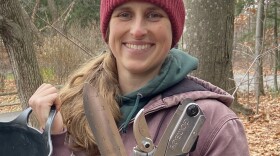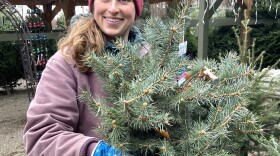One of the first gardening tasks that children — or any beginner — can enjoy is removing spent flowers in the garden.
It's rewarding to make the plant immediately look better. But what other benefits does deadheading provide?
The main reason to remove the dead flowers is so the plant doesn't put energy into seed production. When you remove spent flowers, it can put more energy into the plant itself and growing roots, and that should result in more blooms next year.
For certain plants, deadheading will also help you get another round of flowers in that growing season. For a lot of annual flowers, like petunias and pansies, this is important.
“One thing that I always like to cut back is my Shasta daisies,” says Emma Erler, lead horticulturist at Kirkwood Gardens, which is part of the Squam Lakes Natural Science Center in Holderness. “They often will form flower buds in the axles of the leaves. So where the leaf joins the stems, you'll get a secondary crop of blooms.”
Garden phlox will sometimes reward you with more blooms if you cut it back. But, as Erler warns, it doesn’t always work.
“Salvia sometimes too will give you another nice bloom if you do it,” she says, “so it’s absolutely worthwhile just to give it a shot.”
So why wouldn't you choose to clean up the garden by removing dead flowerheads?

Erler says aesthetics is the reason she allows some plants to go ahead and form seed pods.
“Peonies, particularly the hybrid peonies, can have really lovely seed pods that form after the flowers bloom," she says.
Another reason you might want to leave the dead flowers is if want to save seeds for your garden next year.
”There's actually a lot of different perennials that you can grow pretty easily from seed, like cone flowers or black-eyed Susans,” says Erler.
“I often will save seed from those to plant for next year's garden. Seed-starting is pretty wonderful. And that's how new varieties are formed too. So sometimes I get nice little surprises of a plant that's slightly different from how the parent.”
See you in the garden!
Homegrown NH is a collaboration between Squam Lakes Natural Science Center and NHPR.










